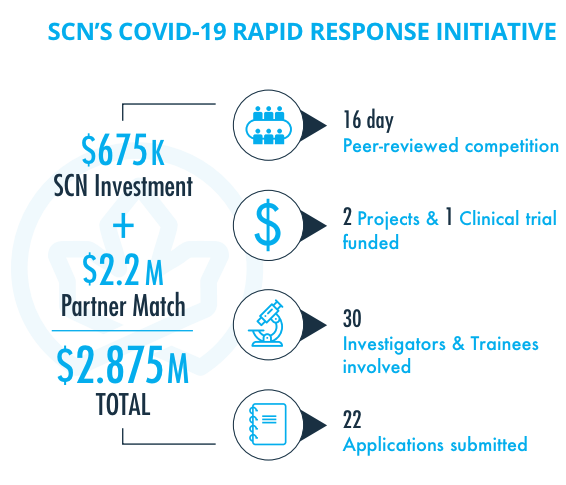BLOG CARNIVAL: What are the opportunities and challenges you see for the regenerative medicine field as the world recovers from COVID-19?
The global coronavirus pandemic has disrupted our economy, endangered our health, and changed the way we go about daily life. It has created enormous stress on families and businesses. Our health care systems and front lines workers have been placed at risk, while governments work to provide the supports needed to keep our country afloat. Yet, there have been some positives – many of which come from the world of science.
During these past months, we have seen remarkable efforts by health researchers from around the world who have been collaborating and sharing new knowledge about the coronavirus. It was two Canadian scientific teams who isolated the coronavirus that causes COVID-19. This discovery meant that other researchers working on the virus now have the tools needed to undertake critical research without having to ship the live virus across borders. Canadian researchers have a long history of being nimble and able to respond quickly when a pressing health crisis emerges.
This is true of Canada’s stem cell research community. At the outset of the coronavirus outbreak, the stem cell research community moved quickly to activate, focusing their efforts through the Stem Cell Network’s (SCN) Rapid Response Research Initiative. SCN expedited a call for research, assessing 22 innovative applications from across the country and turning around a comprehensive competition in a few short weeks. As a result, SCN was able to reallocate $675K to fund a clinical trial and two stem cell-based projects related to COVID-19. This investment leveraged an additional $2.2M in partner funding, for a full investment of more than $2.8M.

The quality of the projects funded are at the highest scientific level and strike right at the heart of some of the challenges presented by this virus:
- The clinical trial led by Duncan Stewart from the Ottawa Health Research Institute brings together a team of multidisciplinary experts which will verify optimal dose and safety of mesenchymal cells (a broad category of cells that have been shown to improve immune response and calm inflammation) as a therapy to reduce the impacts of acute respiratory distress associated with COVID-19. This clinical trial expects to enrol up to 27 patients from Ottawa and Toronto in three stages.
- The study led by William (Bill) Stanford from the Ottawa Hospital Research Institute and Amy Wong from The Hospital for Sick Children will use human tissue models to investigate how the cells that line the lungs and airway become infected by the SARS-CoV-2 virus and how the behaviour of these cells changes once they are infected. The team will also use these respiratory cells to screen a library of drugs for their ability to reduce disease severity.
- In response to evidence that many COVID-19 patients report sensory symptoms, such as loss of smell and taste, visual disturbances and headaches, Julien Muffat and Yun Li from The Hospital for Sick Children are seeking to understand which types of human brain cells can be infected by the SARS-CoV-2 virus, how these cells respond once infected, and then identify which genes control brain cell infection and response.
The COVID-19 crisis might be perceived as an opportunity as it challenged our community to be nimble and apply novel solutions to a global challenge. The level of ingenuity coupled with expedited collaboration with partners demonstrates the strength of the stem cell research community and the real-life applicability of regenerative medicine therapeutics. But the outcomes are not all positive.
A threat which has continued to rear its head stems from the reprehensible marketing of unproven stem cell therapies to treat COVID-19 and other chronic conditions. These activities not only pose a real threat to people’s health but may serve to undermine the confidence in and promise of regenerative medicine for the future. Nipping these so-called miracle cures in the bud, before they become widespread should be something our entire community takes on as a core responsibility – using our expertise to transfer knowledge, uphold the credibility of our science and prevent needless heartbreak.
Unfortunately, the pandemic has damaged more than just our health and we would argue however that the biggest threat is economic. When the crisis hit, research ground to a halt as labs were closed and lab staff were required to find work from home solutions. Now, as workplaces begin to reinstate with new protocols, governments are pulling together plans for economic recovery. It is critical that investment in research is part of those plans. Without long-term, stable funding, momentum will be lost, and the solid foundation of Canadian research excellence placed at risk. The budget and investment decisions made in the next year will be critical to shaping our economy for decades to come. Making the case for robust and stable investments in research and innovation will be fundamental to the preservation of our sector and we know, will make meaningful contributions to Canada in both economic and social terms.
This blog is just one of many covering this topic as part of Signal’s fifth annual blog carnival. READ what others in the community have to say.
– The Stem Cell Network
